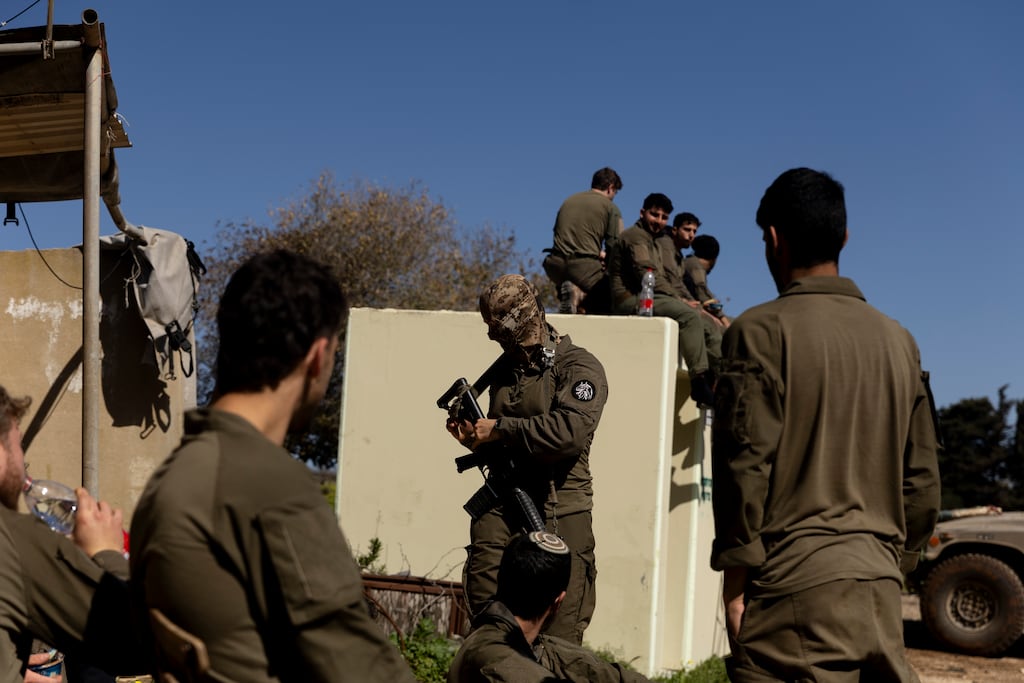Israel said it would not withdraw its forces fully from southern Lebanon as the extended deadline under the terms of its November ceasefire with Hizbullah passed on Tuesday.
In a post on the social media platform X Israel Defense Forces Arabic-language spokesman Avichay Adraee said the IDF would continue to “remain and temporarily control several control points inside southern Lebanon, which will enhance our defensive efforts in the area”.
He added: “Our message is clear: The IDF will be everywhere in order to protect the residents of the north. The IDF is committed to the terms of the agreement and will act to thwart any attempt to bypass or violate them.”
Israeli defence minister Israel Katz called the area a “buffer zone”, saying Israel had kept “five control positions”.
The ceasefire came into effect on November 27th last. It required the Lebanese military to deploy across southern Lebanon, with Hizbullah to withdraw to north of the Litani river, about 30km from the Israeli border in most areas, and the IDF to withdraw from Lebanon. Israel has accused Hizbullah of failing to adhere to this.
Beirut-based NGO the Legal Agenda said it had documented 855 Israeli violations of the ceasefire by early February. Those killed, it said, included women, including a 75-year-old hit with four bullets; children; government officials and medics, while destroyed sites included homes; commercial, industrial, and agricultural institutions; tourist resorts; mosques and a village cemetery. Israel says it has been enforcing the ceasefire in line with its terms.
The initial 60-day deadline for implementation of the ceasefire expired on January 26th. On that date, Lebanon’s ministry of health said 24 Lebanese people had been killed as they tried returning home to villages where Israel maintained a presence. The dead included six women, a spokeswoman said, while 134 were injured, including 14 women and 12 children.
In a joint statement on Tuesday the UN’s special co-ordinator for Lebanon, Jeanine Hennis-Plasschaert, and Unifil head of mission and force commander Lieut Gen Aroldo Lázaro, said: “Another delay in this process is not what we hoped would happen, not least because it continues a violation UN Security Council resolution 1701.
“This should not, however, overshadow the tangible progress that has been made since the [ceasefire] came into force in late November.”
Resolution 1701 ended the 2006 war between Israel and Hizbullah but was never fully implemented. It also called for the withdrawal of Hizbullah forces from south of the Litani river and the withdrawal of Israel forces from Lebanon.
The joint statement said that the IDF had withdrawn from “population centres” in southern Lebanon and the Lebanese army was “supporting the return of communities and working to restore critical services”.
Despite that it said “much of the hard work ... is still ahead of us. We call on both parties to meet their obligations. A sense of safety among communities of southern Lebanon, who are grappling with the wide scale destruction of their villages and towns, as well as residents of northern Israel who had to leave their homes, will not be rebuilt overnight and cannot come from a continuation of military operations. Rather, sustained political commitment is the only way forward.”
The latest conflict between Israel and Hizbullah began on October 8th, 2023, when Hizbullah fired rockets into Israeli-controlled territory “in solidarity” with Hamas, which had led its attack on Israel the previous day.
In September 2024, Israel’s aerial attacks escalated across Lebanon, while its forces also launched a ground invasion. More than one million people were displaced from their homes. By the time of the ceasefire, almost 4,000 people in Lebanon had been killed and more than 16,500 wounded, according to Lebanon’s ministry of health. Israeli authorities say more than 80 Israeli soldiers and 47 civilians were killed, while around 60,000 Israelis were displaced.
Last Friday Unifil said a convoy taking peacekeepers to Beirut airport was violently and “outrageous[ly]” attacked, with one vehicle set on fire. Unifil’s outgoing deputy force commander, who was returning home after ending his mission, was injured. The US state department said the attack was carried out “reportedly by a group of Hizbullah supporters”; Hizbullah later condemned the attack.
Lebanon’s new president Joseph Aoun called the attack “unacceptable”, saying “the security forces will not be lenient with any party that tries to destabilise and undermine civil peace in the country”.
Mr Aoun, a former Lebanese army commander, became president on January 9th, after a political crisis that saw the post vacant for more than two years.
The war between Israel and Hizbullah significantly weakened the Iran-backed militant group, which was previously known as a “state within a state”. Many Lebanese people hope the country’s government and institutions can now be more empowered to tackle a range of crises, including the economic crisis that has crippled the nation since 2019.
The funeral of Hizbullah leader Hassan Nasrallah, who was assassinated by Israel last September, is due to be held this Sunday.














